Program Planning
All Scout programs should be adventurous, fun, challenging and inclusive, for all Scouts involved with each age section having a programming model whereby youth members are able to create a Scout program that is engaging and suitable for all members of the Unit or Patrol.
Key elements of program planning include:
- Activity ideas – All members of the Unit have the opportunity to suggest activity ideas and the Unit Council will Plan > the program cycle, guided by adults
- Challenge Areas – Challenge Areas represent the four key categories Scouting activities come under, support the generation of ideas and make up the Scout program
- The Scout Method – The Scout Method underpins the Scout youth program, and all elements are appropriate for all ages and all backgrounds and abilities
- Plan>Do>Review> - Plan>Do>Review> supports continuous improvement, recognises a youth members learning and development through SPICES and ensures the Unit program provides a diverse range of experiences
- Program Cycle - The Unit program is structured around a series of activities called the program cycle which will last for an identified period of time. A program cycle might be aligned to a school term, a certain time period or even a particular activity such as a Unit hike or Unit camp. The Unit might have several program cycles occurring at the same time such as the regular weekly program, a Unit camp or a District event.
Depending on the age section, the Unit Council will lead the bulk of the program planning by following the six key steps in the program cycle:
Review>
- Reviewing the success of the current program cycle (by Unit, Unit Council or Patrol or small Groups)
Plan>
- Gather all information that’s happening in Scouting and the community
- Listing the personal progression ideas of all Unit members (by Patrols supported by adults, Patrols or individuals)
- Program planning (adults, Unit Council guided by adults, or Unit Council)
Do>
- Monitor the Program (adults, adults with feedback from youth, or Unit Council)
Review>
Ongoing Review>
Learning Checkpoints
To understand:
- The role of youth members and the Unit Council in the program planning process.
- The role of adults in program planning according to the age range section.
- The six key steps of a program cycle.
- How the four Challenge Areas contributes to a diverse program full of engaging experiences.
- How to support and guide youth members in developing activity ideas.
- How a diverse program assists youth members to achieve their Program Essentials Milestones.
- How active involvement in a diverse Scouting program contributes to a Scouts development in all the SPICES areas.
Resources
Promise and law programming guide
Programming planning - Joey Scouts, Cub Scouts, Scouts, Venturer Scouts, Rover Scouts
Plan>Do>Review> - Joey Scouts, Cub Scouts, Scouts, Venturer Scouts, Rover Scouts
Program Template - Joey Scouts, Cub Scouts, Scouts, Venturer Scouts, Rover Scouts
Videos
PowerPoint Presentation
Program Planning PowerPoint Presentation
Discussion
Which elements of the role of youth members and the Unit Council in the program planning process are working in our Unit and why? What obstacles have we encountered and how might we overcome them?
What are some effective strategies for guiding youth members in the program planning process?
How do we achieve program planning if our Unit Council members are young or inexperienced?
How often should a Unit Council meet for program planning?
What are the most effective resources that can help youth members with planning their program?
How can theming a program or program cycle contribute to a program that is adventurous, fun, challenging and inclusive?
Why is it important for a program cycle to have a balance of Challenge Areas and in what ways can this be determined by the Unit Council?
Activity
In taking on the role of youth members:
- Initiate a brainstorming session for program ideas appropriate for your age range section.
- Categorise the activity ideas into Challenge Areas and discuss the conversation with youth members if there is not a balance of activity ideas across the four Challenge Areas.
- How are the activity ideas formed into a Program Cycle or theme?
FAQs
Q: How is youth member involvement in program planning different across the age range sections?
A: Youth members in all Sections follow the same six key steps in the program planning cycle with the level of adult support in each of the Plan>, Do> and Review> phases reducing as the age ranges increase.
Q: How do we make sure important skills are covered in the program?
A: The Review> process following each program cycle helps us to continuously improve, make sure what we’re doing is really Scouting, and uses the Scout Method. The process will confirm youth member learning and development through SPICES and identify learning by doing. A program cycle that was adventurous, fun, challenging and inclusive would indicate that youth members participated in a diverse range of experiences through the Challenge Areas.
Q: How many Challenge Areas can be allocated to a program night?
A: Only one Challenge Area can be allocated to a program night.
Q: How many Participates, Assists and Leads can a Scout achieve per activity?
A: One Participate, Assist or Lead is recognised per activity. For major events or multi-day activities the Organising Committee or Leader in Charge will determine how many allocations can be made.
Reflection
Are there aspects of the Special Interest Areas that prove challenging for the different age ranges within the Unit? If so, how do we identify and address those challenges?
Who else do I need to bring onboard to get started? How can we introduce Special Interest Area type activities and subject matter experts into the program in a way that youth members are motivated to pursue a project idea?
What brainstorming techniques can I share with my Group or Section? Will the brainstorming process that we use for activity ideas and Challenge Areas work for Special Interest Areas?


